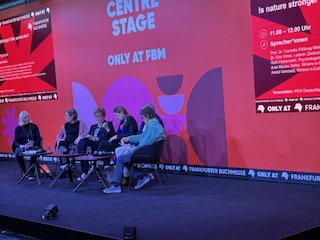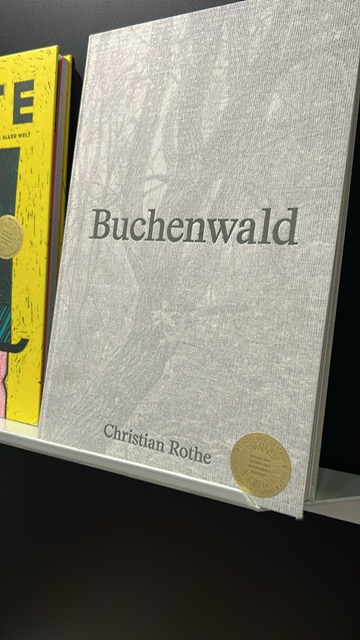You can fully finance you project (and more) if you apply the necessary effort.

Green Hill at the Frankfurt Book Fair 2025
Green Hill is again at the Frankfurt Book Fair in Germany or ‘Frankfurt Busch Messe’.
I’m here scouting the industry – it’s always rewarding adding to Green Hill’s expertise and capability. As always indie publishing or self-publishing isn’t a feature of the Fair. Instead most of the world’s traditional publishers are here: over 4.000 companies/exhibitors from 92 countries – yes, that’s not a typo. Over the five days there will be almost 250,000 visitors – yes again that’s not a typo. Of the 250,000 there are about 125,000 industry professionals (like me).
What is Green Hill doing here?
We are constantly adding to our expertise and the Messe is a great way of doing that. Our print broking division (Fox Merit) has had discussions with many book printers exhibiting here (mainly from China, Korea and Hong Kong) as we endeavour to provide the world’s best print options at value. An important part of the industry is book production technologies. Green Hill already has good capability in this area and it sets us apart from solo graphic designers trying to master book production at a competitive cost to indie authors.
The Messe has returned to its former strength after the Covid pandemic. Everyone is back. All the new tools and technologies are here along with all the traditional publishing giants of the publishing industry. Of course the big feature of the Messe is the trading of foreign language publishing rights. It’s a feeding frenzy – a market place where publishing rights are bought and sold with gusto.
DAVID WALTERS ~ Business Development Manager
Featured Blog Posts:
Self-publish your book by raising funds through crowdfunding
Is Goodreads good for authors?
Estimated reading...
What is typesetting?
Estimated reading...
Social media marketing for authors
Social media...
Have you got the book hierarchy blues?
Estimated reading...
The economics of selling your book
Estimated reading...
What 99.9% of authors don’t know.
Estimated reading...
Three tips for drafting your own work
Estimated reading...
Featured Blog Posts
Self-publish your book by raising funds through crowdfunding
You can fully finance you project (and more) if you apply the necessary effort.
Is Goodreads good for authors?
Estimated reading...
What is typesetting?
Estimated reading...
Social media marketing for authors
Social media...
Have you got the book hierarchy blues?
Estimated reading...
The economics of selling your book
Estimated reading...
What 99.9% of authors don’t know.
Estimated reading...
Three tips for drafting your own work
Estimated reading...
Interested in publishing your book but unsure where to start or what is even involved? Tell us about your project and we will post you a copy of our:
The Little Book of
Big Publishing Tips.
In just a quick 8,000 words, this little book will equip you with the knowledge you need to successfully publish your book.
The Little Book of Big Publishing tips goes into the essentials of self-publishing a book, outlining the business and financial side of publishing, legal issues, design, editing, sales and marketing. There's even a section on how to identify a vanity-publishing scam.















